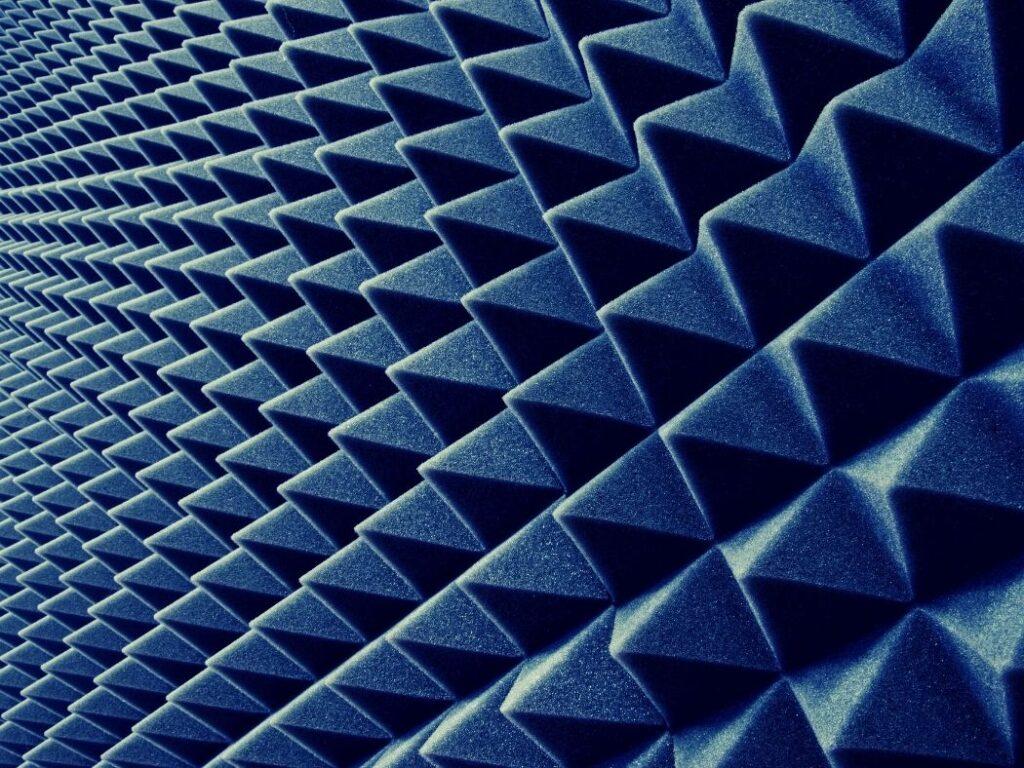Too much noise in your house? Whether you are a professional musician who wants to create your very own music room, or you simply need to get away from the hustle, the bustle, and the noise of the outside world, soundproofing panels and tiles can help absorb all of that clatter and noise.
Sound is an intriguing science and numerous individuals have devoted their lives to developing materials that alter humans’ experience of sound. Recording studios are the most obvious example of this endeavor. Scientists have continually tried to develop solutions that make our experience with music and sound more appealing.
But what is the science that makes soundproofing panels possible? How and why do we want to isolate sound and what other applications, if any, does soundproofing material have besides music and film? Continue reading to learn more about the science of soundproofing.
We’ve already discussed the acoustic benefits of tapestry wall hangings, and area rugs have a certain sound absorption quality to them. But what if you want to take your soundproofing to a whole new level? First, it’s important to understand the science of soundproofing, which means understanding the science of sound itself.
The Science of Sound
To understand the characteristics of soundproofing panels, you need to understand the science of sound first. Sound, at the most basic level, is a vibrational energy that produces a sound wave, vibrating the air around its source. The air carries these vibrations through the air and into your ear canal, where it vibrates tiny hairs. Then, neurological waves get sent to the brain to interpret the sound.
It didn’t take long for us to figure out that we can manipulate materials to adjust a space’s sound environment. For example, sound naturally bounces off hard surfaces but it may muffle and distort after contacting other surfaces. The understanding and application of sound-altering surfaces have become the focal point of soundproofing as a science.
Absorbing Sound Vs. Blocking Sound
Naturally, the science of soundproofing has different principles. Blocking sound and absorbing sound are two different concepts. Though the science behind these principles is closely related, there are clear distinctions between the two.
Light waves bounce off different materials much as sound waves do. Thus, various types of foam interact with the outside world to produce a different sound environment than harder surfaces. Acoustic foam surfaces, however, don’t completely block out sound waves from entering a room.
How Sound Absorbing Foam Works
Sound absorbing foam is typically softer and lighter than soundproofing material. These materials have porous, flexible structures and they act as a natural sound wave absorber, preventing sound waves from bouncing off hard surfaces such as your walls, floors, and ceilings.
Sound absorbing achieves this by converting existing sound energy to heat and reducing the friction that results from waves bouncing back and forth within a given space. These types of foams can enhance the room’s acoustics and they are often shaped into pyramids or wedge shapes to trap sounds and further manipulate sound waves.
There are more applications to sound-absorbing foam than fully soundproofing a room. Recording studios first soundproof studios to seal them off from the outside sound environment. This requires invasive construction techniques and specific architectural designs. Sound absorbing foam panels don’t and you can put them anywhere. You can also install felt wall tiles that accomplish simple results.
When to Install Sound Absorbing Foam
Treating a room with sound-absorbing foam panels requires you to soften hard surfaces. Think about buildings with harsh surfaces such as churches and gymnasiums. The reason why they are so reverberant is that they have hard ceilings.
That harsh material works for church choirs. But if you’re trying to isolate sounds within a room and you don’t want them to bleed into each other, as you want to do in a recording studio, you need softer surfaces.
Acoustic tiles can soften the sound vibrating within a room to create a more isolated environment even if you aren’t in a recording studio. For example, if you want a somewhat isolated home office or bedroom, you can install acoustic tiles to reduce the sounds vibrating within your room.
Sound Blocking Foam
Sound blocking foam is different from acoustic foam panels. Sound blocking foam fits between the walls to block sounds from entering or leaving the room. Denser foams are required for this application. The thicker the foam, the fewer sound waves will be able to escape.
When to Install Sound Blocking Foam
Most of the applications for sound blocking foam revolve around recording studios. Because you need to block all sounds from entering the room, you need to ensure the sound integrity of the walls themselves. That’s the only way to prevent sound from entering a room.
The Future of Sound Blocking Foam
The science of sound-absorbing foam is always improving and getting more complex. For example, quantum mechanics has even entered the conversation. Scientists are working on a new sound-insulating material that completely traps sounds inside its foam instead of letting it pass through and reducing the vibrational energy.
This type of material could dramatically change soundproofing. Perhaps the most exciting aspect is that it would only let sounds pass one direction through a medium.
Can Acoustic Soundproofing Foam Completely Soundproof a Room?
For true soundproofing, the material needs to prevent vibrations from creating energy within a given space and block it from entering the environment. For highly controlled environments such as recording studios, this is a necessity.
However, for most, sound-absorbing panels offer plenty of capabilities. These panels can reduce the vibrational energy within a room and cultivate more peaceful work and sleep spaces.
Conclusion- The Science of Soundproofing Panels
The applications for soundproofing panels are always expanding. In the future, we could witness the technology advancing to the point where individuals in their homes can accomplish recording-studio-like environments with similar soundproofing properties as professional recording studios.

